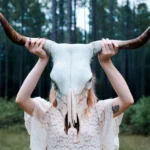Among the many fascinating discoveries from the Oseberg ship, a well-preserved Viking vessel that was excavated in Norway in 1904, there is one that stands out for its enigmatic origin and meaning: the Oseberg Buddha. This is a small statuette of a seated man in the lotus position, with a flat head and a peaceful expression. His chest is decorated with red and yellow enamel and four swastikas, a symbol of auspiciousness and good fortune in Buddhism. How did this seemingly Buddhist artifact end up in a Viking burial mound? What does it tell us about the cultural and religious interactions between the Vikings and the Asian civilizations?
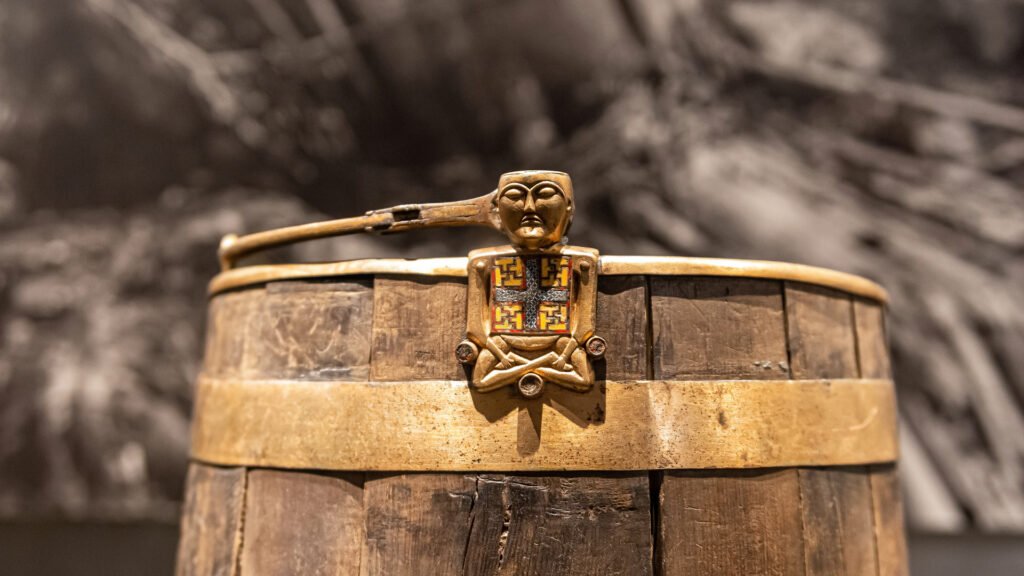
The Oseberg Ship and its Treasures
The Oseberg ship is one of the most important archaeological finds of the Viking Age. It was discovered in a large burial mound near Oseberg farm, Vestfold county, Norway, by a team of Norwegian and Swedish scientists. The ship dates from the 9th century CE and contains the skeletal remains of two women, who are believed to have been of high status and possibly related to the royal family. The ship also contains a wealth of grave goods, such as elaborately carved sleighs, a four-wheeled cart, wooden chests, textiles, tools, weapons, and animal bones. The ship itself is a masterpiece of craftsmanship, with intricate carvings and decorations on its prow, stern, and sides. The Oseberg ship and its artifacts are currently exhibited at the Viking Ship Museum in Oslo.
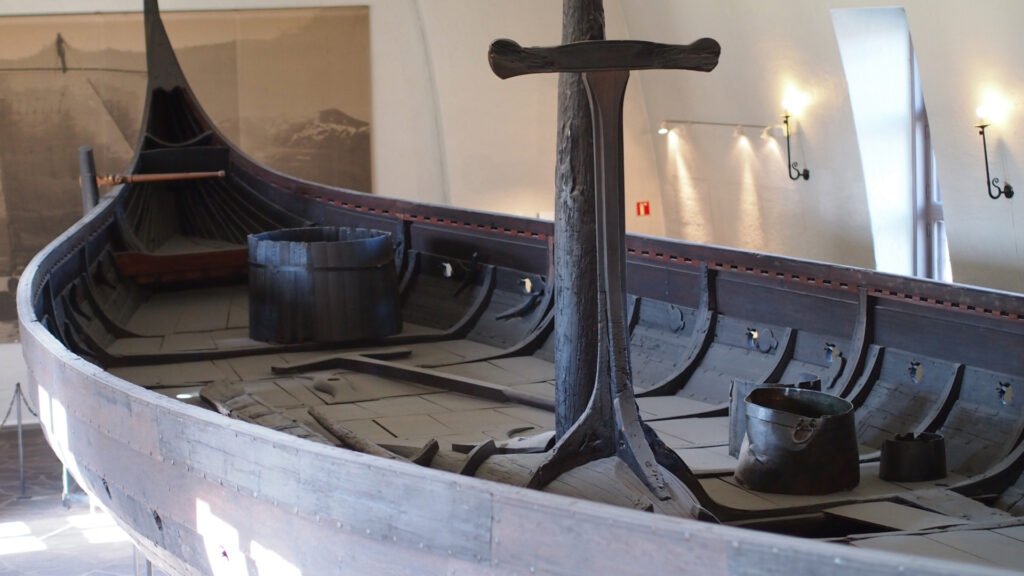
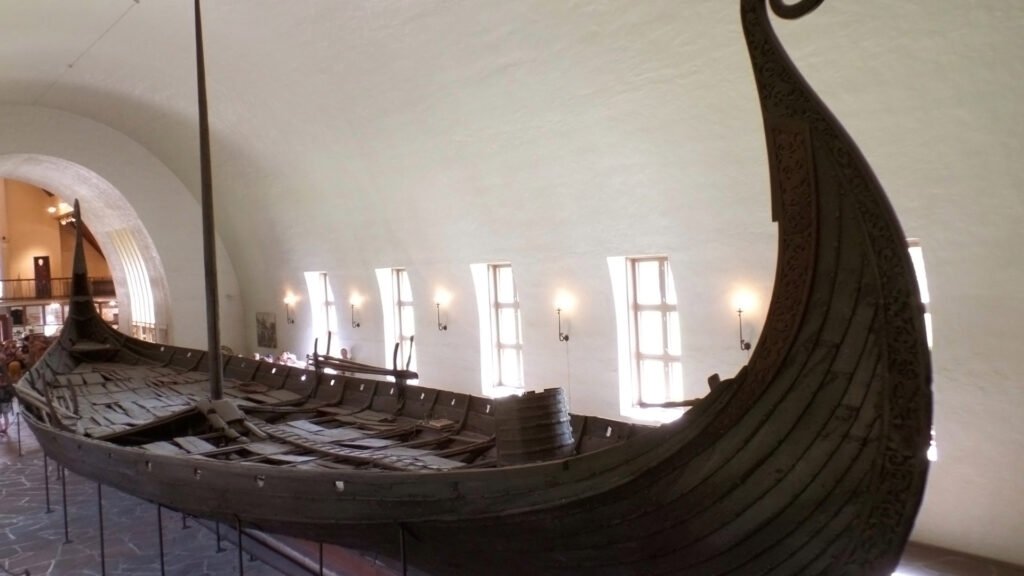
The Oseberg Buddha and its Parallels
The Oseberg Buddha is a bronze bucket with two identical figures forming the joints of the handle. The figures are about 13 cm high and 9 cm wide, and weigh about 800 grams each. They represent a man seated in the lotus position, with his hands resting on his knees. His head is flat and his face has closed eyes and a sunken expression. His chest is ornamented with red and yellow enamel and four swastikas. The enamel decoration also includes panels of millefiori, a technique of creating patterns with glass rods. The bucket itself is made of wood and covered with leather. It has a diameter of about 25 cm and a height of about 17 cm. It might have served the purpose of containing water or wine.
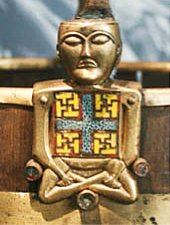
The Oseberg Buddha has attracted much attention and speculation because of its apparent resemblance to Buddhist art. The lotus position, the flat head, the peaceful expression, and the swastikas are all features that are commonly found in Buddhist statues and paintings, especially from India and Central Asia. The Vikings are known to have traveled and traded extensively across Europe and Asia, and may have encountered Buddhist missionaries or merchants during their expeditions.Indeed, a different Buddha statuette dating back to the 6th century CE, crafted from bronze and originating in northern India, was discovered on Helgö Island, Sweden. It is currently exhibited at the Swedish Museum of National Antiquities in Stockholm.
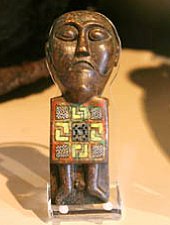
However, most researchers agree that the Oseberg Buddha is not an imported artifact from Asia, but rather a local product of the British Isles, where similar enamel decorations and human-shaped handles have been found on other objects. For example, the Hexham bucket, found in Northumberland, England, has a flat human head with a broad face and a stress on the eyes. The hanging bowls from Löland, Norway, and Maas, Holland, have human-shaped handles with red and yellow enamel. The most striking parallel to the Oseberg Buddha is the Myklebostad hanging bowl, found in Møre og Romsdal, Norway, which has anthropomorphic escutcheons with elaborate enamel and millefiori, similar to the Oseberg Buddha’s chest.Nevertheless, the figure on the Myklebostad bowl is in a standing position, not seated.
The Oseberg Buddha and its Interpretations
The origin and meaning of the Oseberg Buddha are still unclear and debated. Some possible interpretations are:
- The Oseberg Buddha is a representation of a meditating Viking, who adopted some elements of Buddhism or other Eastern religions during his travels. The bucket may have been used for ritual purposes, such as washing or drinking. The swastikas could have been embraced as a symbol of good fortune or protection.

- The Oseberg Buddha is a representation of a Norse god, such as Odin, Thor, or Freyr, who was associated with fertility, prosperity, and wisdom. The bucket may have been a votive offering or a symbol of divine favor. The swastikas might have represented the sun or the changing seasons.
- The Oseberg Buddha is a representation of a foreign deity, such as Buddha, Shiva, or Vishnu, who was revered by some Vikings or their trading partners. The bucket may have been a souvenir or a gift from a foreign land. The swastikas could have served as symbols of the cosmic order or the cycle of life.
The Oseberg Buddha persists as an intriguing and enigmatic relic from the Viking Age, prompting us to question our assumptions and delve into the intricate cultural and religious exchanges between the Vikings and Asian civilizations.
How did Vikings interact with Indian culture?
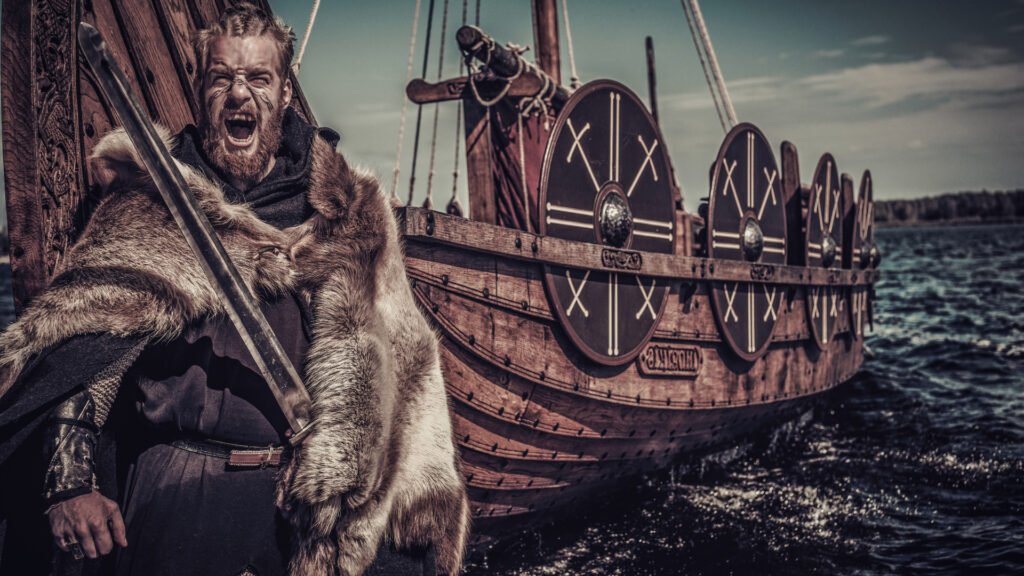
The Vikings and the Indians had some cultural and religious interactions, mainly through trade and exploration. The Vikings traveled and traded extensively across Europe and Asia, and may have encountered Buddhist missionaries or merchants during their expeditions.
Are there any other Viking artifacts related to Hinduism or Buddhism?
There is also some evidence of artistic and linguistic influence between the two cultures. For example:
- A small bronze statuette of Buddha, dating from the 6th century CE, was found on the island of Helgö, Sweden, along with other exotic objects from Egypt and Coptic. The statuette is believed to have originated in northern India and could have made its way to Scandinavia through trade routes.

- The Oseberg Buddha, a bronze bucket with two figures of a seated man in the lotus position, was found on the Oseberg ship, a well-preserved Viking vessel that was excavated in Norway. The bucket may have been influenced by Buddhist art or motifs, or may have represented a Norse god or a meditating Viking. The bucket also features enamel and millefiori decorations reminiscent of those discovered on items from the British Isles.
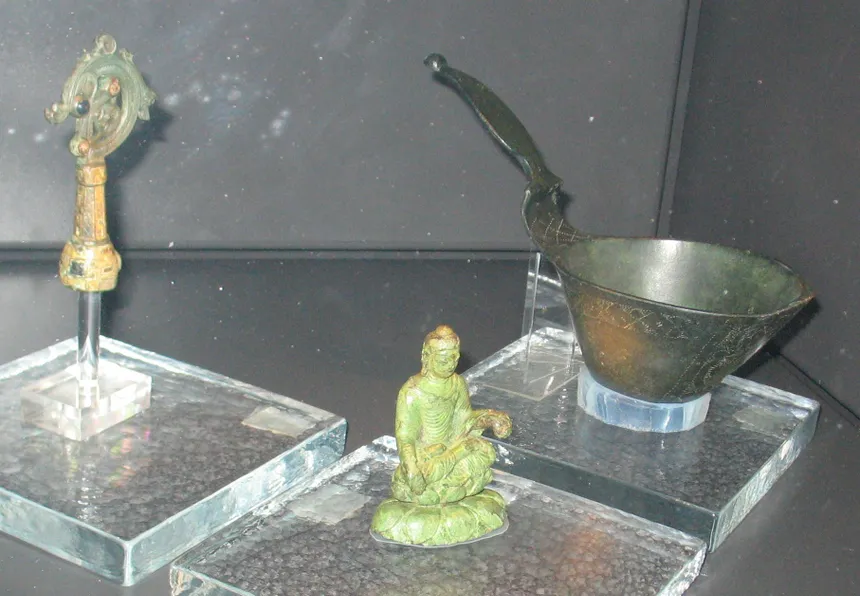
- Some words in the languages of India and Nahuatl, the root language of most ancient American languages, have striking similarities. For example, the word Nahuatl appears to contain the Sanskrit root word Nav for ship and Navgath for navigation. “Asthika” in the local language refers to Aztec, and in Sanskrit, it signifies those who believe in the divine.

- Some Mjolnir pendants, amulets shaped like Thor’s hammer, have a loop on the top that resembles the shape of a trident, which is a weapon of the Hindu god Shiva. This could indicate the incorporation or adjustment of Hindu motifs by the Vikings.
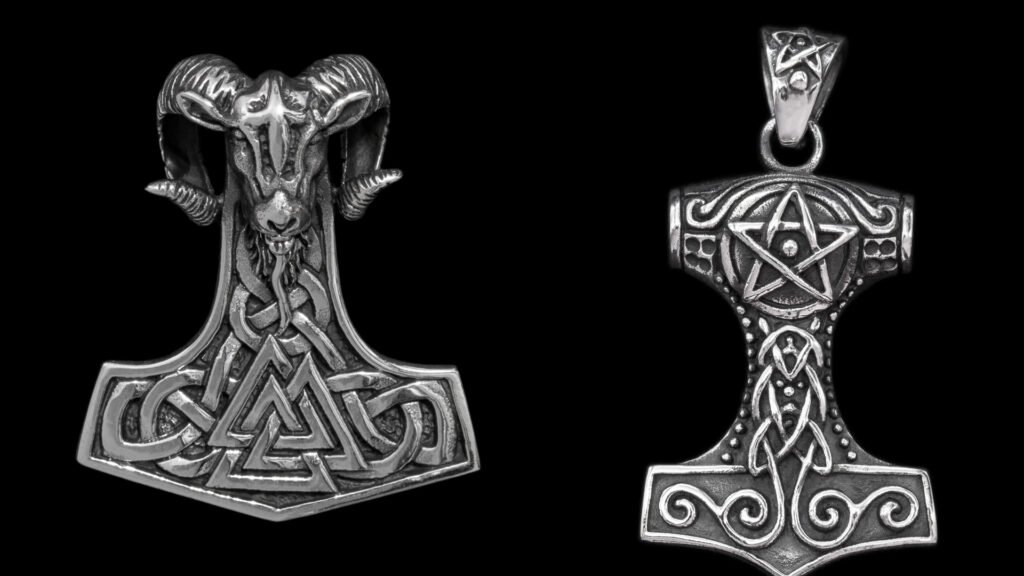
These instances demonstrate that there was some contact and exchange of ideas between the Vikings and Indians. However, the extent and nature of their interaction remain uncertain and subject to debate.
Other Related Pictures:





I hope you enjoyed reading this blog post. If you have any questions or comments, please feel free to share them below. Thank you for your attention. 😊
Thank You
Snaya Singh
Other Related Articles:
Berenike: Indian Heritage in the Egyptian Desert”
Connection Between Ancient India And Ancient Mesopotamia – Sumerian Civilization
Gravity in Ancient Indian Texts and its Relationship with Other Civilizations
Indian Epic Ramayana and Elamite Connection From Ancient Sumer – The Legacy of Lord Rama


